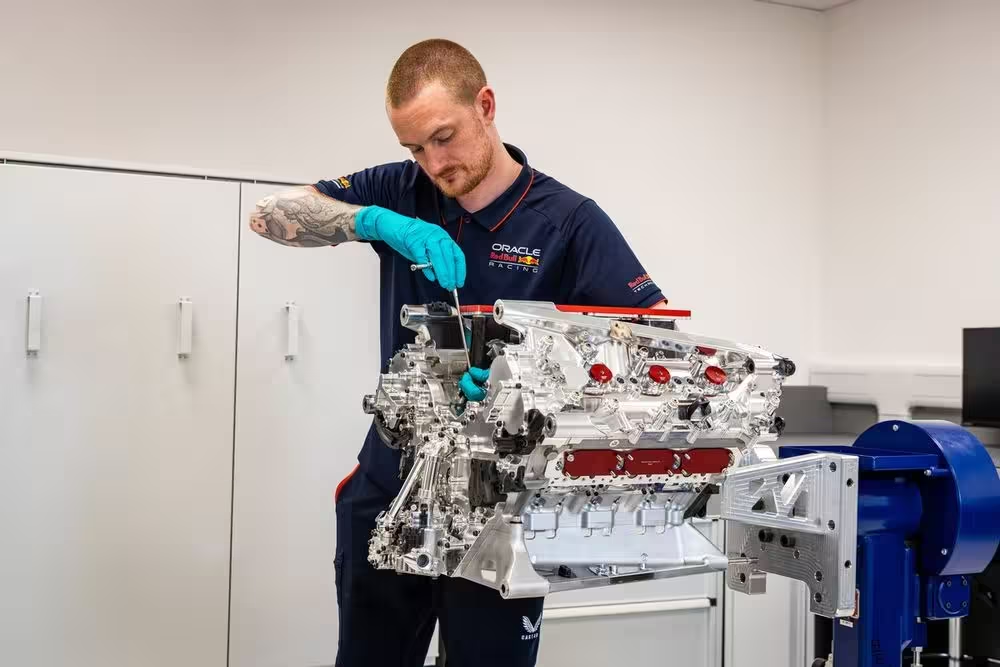Red Bull may be embracing a “no risk, no fun” approach for its new Formula 1 engine, but it admits the project with Ford is one that cannot fail.
The Milton Keynes-based team is investing hundreds of millions of pounds in developing a power unit for the 2026 regulations, having formed a technical alliance with Ford.
While it knows it faces a huge challenge in taking on the might of other experienced F1 manufacturers like Mercedes, Honda and Ferrari, it equally understands that how it does will ultimately decide whether it is a championship contender or not.
The new Red Bull Powertrains factory at Milton Keynes is now fully up and running and packed with staff, as dyno work continues, while Ford is offering as much assistance as it can with personnel and use of its own facilities to help fast track progress.
But the high stakes are not being ignored, with Red Bull team principal Christian Horner crystal clear that the engine has to deliver.
“The scale of the investment is the biggest single investment that Red Bull have ever made in motorsport,” he said. “Together with Ford, we have to succeed.
“We can’t afford for this project not to succeed. I think, for us, strategically, where we are on our journey as a group and as a team with this alliance, this powertrain change in regulations is the perfect juncture to take everything under control with all the benefits that come from that having everything on the same campus.”
Red Bull Ford Powertrains
Photo by: Red Bull Content Pool
Ford’s evolving role
While Red Bull’s decision to build its own engine was triggered by current engine partner Honda’s original decision to quit F1, it was always clear that it could not do it alone and wanted a tie-up with a manufacturer.
That had originally looked like being Porsche, but talks with the German car maker collapsed at the 11th hour amid concerns from Red Bull management about it losing its independence as a racing team.
It opened the door for American giant Ford to seal a deal, which will see the famous Blue Oval return to an F1 car from the start of 2026.
Ford’s input for the project has evolved over time and is certainly not a case of Red Bull and its partner looking after specific elements of the power unit.
Instead, as Horner and Ford’s global motorsports director Mark Rushbrook have explained, the working relationship is one that constantly evolves to help best allow them to progress together.
Horner…
Click Here to Read the Full Original Article at Autosport.com – Formula 1 – Stories…

